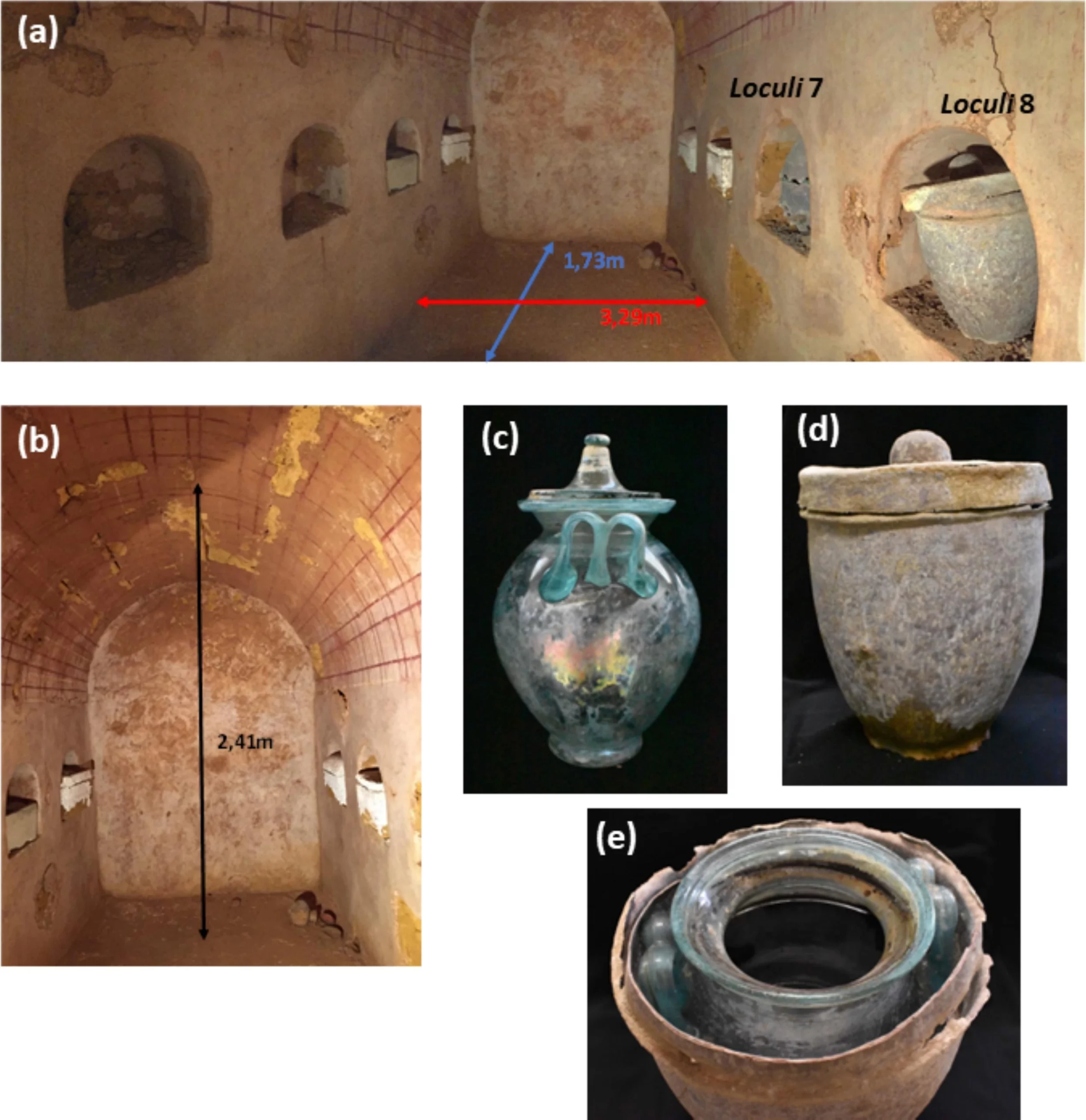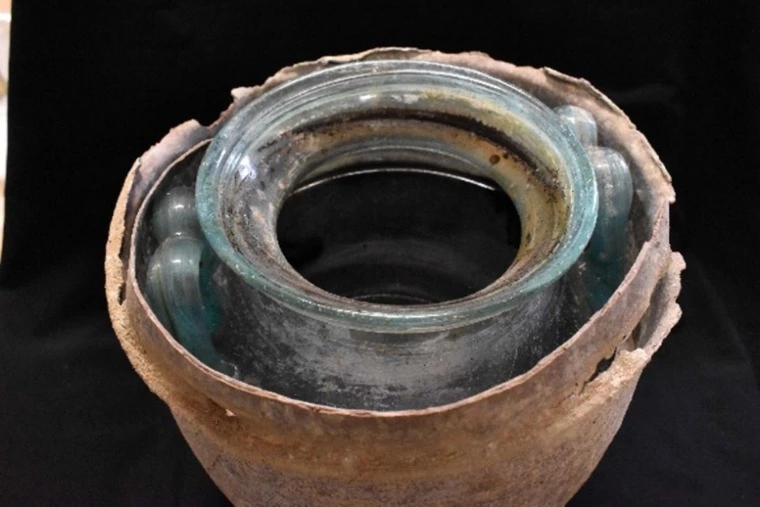Researchers from the University of Córdoba have announced the discovery of the world’s oldest wine in an ancient Roman tomb in Carmona, Spain.
Initially unearthed in 2019, the discovery offers an extraordinary glimpse into the funerary practices of ancient Rome, highlighting the cultural significance of wine in the afterlife.
In their findings, published in the Journal of Archaeological Science, researchers described the unearthing of the roughly 2,000-year-old ash urn containing a reddish liquid as “exceptional and unexpected.”
Until now, the oldest presumed wine ever discovered was attributed to the “Speyer wine bottle,” found near Speyer, Germany, in 1867. The sealed bottle, dated between 325 and 350 AD, has never been opened due to concerns about how the liquid might react when exposed to air. However, the bottle has long been presumed to contain wine.
According to researchers, the wine urn found at the Carmona tomb predated the Speyer wine bottle by several hundred years, to roughly the first century A.D. Unlike the Speyer bottle, researchers are confident that the liquid found in the Carmona urn is indeed the world’s oldest alcoholic beverage.
“The exceptional finding in an unlooted Roman mausoleum in Carmona, southern Spain, of an ash urn containing cremated human remains and a reddish liquid that had remained intact for about 2000 years was a unique opportunity to examine the chemical composition of the liquid,” researchers wrote.
“The results obtained in this work strongly suggest that the reddish liquid in the ash urn was originally wine that decayed with time, and that it was about 2000 years old, and hence the oldest wine found to date.”


The Roman tomb, unearthed by archaeologists in 2019, housed six individuals. Among the skeletal remains, one of the men was found immersed in a reddish liquid inside a glass funerary urn.
“At first, we were very surprised that liquid was preserved in one of the funerary urns,” the City of Carmona’s municipal archaeologist Juan Manuel Román explained. “After all, 2,000 years had passed, but the tomb’s conservation conditions were extraordinary.”
The exceptional preservation conditions of the tomb played a crucial role in maintaining the integrity of the liquid. The tomb had remained fully sealed and intact, protecting its contents from external contamination and environmental factors.
The initial surprise of finding a liquid in a 2,000-year-old tomb soon turned into scientific curiosity.
A team from the Department of Organic Chemistry at the University of Cordoba, led by Professor José Rafael Ruiz Arrebola, conducted a series of chemical analyses to confirm the liquid’s identity as wine. The research was carried out in collaboration with the City of Carmona and involved the Central Research Support Service (SCAI).
The team examined the liquid’s pH, mineral salts, and chemical compounds related to the glass urn and the bones. They compared these findings to modern wines from regions near Montilla-Moriles, Jerez, and Sanlúcar, Spain.
The presence of seven specific polyphenols, biomarkers found in all wines, was a critical factor in confirming the liquid as wine. The absence of syringic acid, a compound associated with red wine, indicated that the wine was white, although its absence might also be due to degradation over time.
Researchers say the discovery also highlights gender roles and funerary practices of ancient Rome through the use of wine to immerse the skeletal remains of a man.
In Roman society, wine was predominantly a man’s drink, and women were generally prohibited from consuming it. This societal norm was reflected in the Carmona tomb.
In addition to wine, the man’s urn contained a gold ring and bone remains from his cremation bed. In contrast, the woman’s urn held amber jewels, a perfume bottle with a patchouli scent, and silk fabric remnants – with no trace of wine.
These items were part of a funerary trousseau meant to accompany the deceased into the afterlife, illustrating the profound significance of death and remembrance in ancient Rome.
Once a circular mausoleum likely belonging to a wealthy family, the Carmona tomb has offered invaluable insights into historical burial rituals. Located along the road connecting Carmo with Hispalis (Seville), the mausoleum is a testament to ancient Rome’s rich funerary traditions.
The implications of finding ancient wine extend into various fields of study, offering new avenues for future research. Archaeologists and historians can further explore the sociocultural significance of wine in different ancient civilizations, comparing Roman practices with those of other cultures.
Chemists and biologists may analyze the wine’s composition to understand ancient preservation techniques and agricultural practices, providing insights into how ancient peoples cultivated and stored food and beverages. This discovery also allows modern winemakers and food preservationists to learn from ancient methods, potentially reviving lost techniques that could improve contemporary practices.
“Although ancient wines adsorbed on vessel walls or their remains can be identified with the help of specific biomarkers, no analysis of such wines in the liquid state appears to have been reported to date,” noted the study authors.
Researchers plan to conduct further tests to identify any remains of microbes, such as bacteria or yeasts, that might be present in the wine. The ongoing research aims to deepen our understanding of ancient winemaking and preservation techniques, potentially offering new perspectives on historical and modern wine production.
The discovery of the world’s oldest wine brings us closer to understanding ancient customs while underscoring the continuity between ancient and contemporary wine culture.
Tim McMillan is a retired law enforcement executive, investigative reporter and co-founder of The Debrief. His writing typically focuses on defense, national security, the Intelligence Community and topics related to psychology. You can follow Tim on Twitter: @LtTimMcMillan. Tim can be reached by email: tim@thedebrief.org or through encrypted email: LtTimMcMillan@protonmail.com

